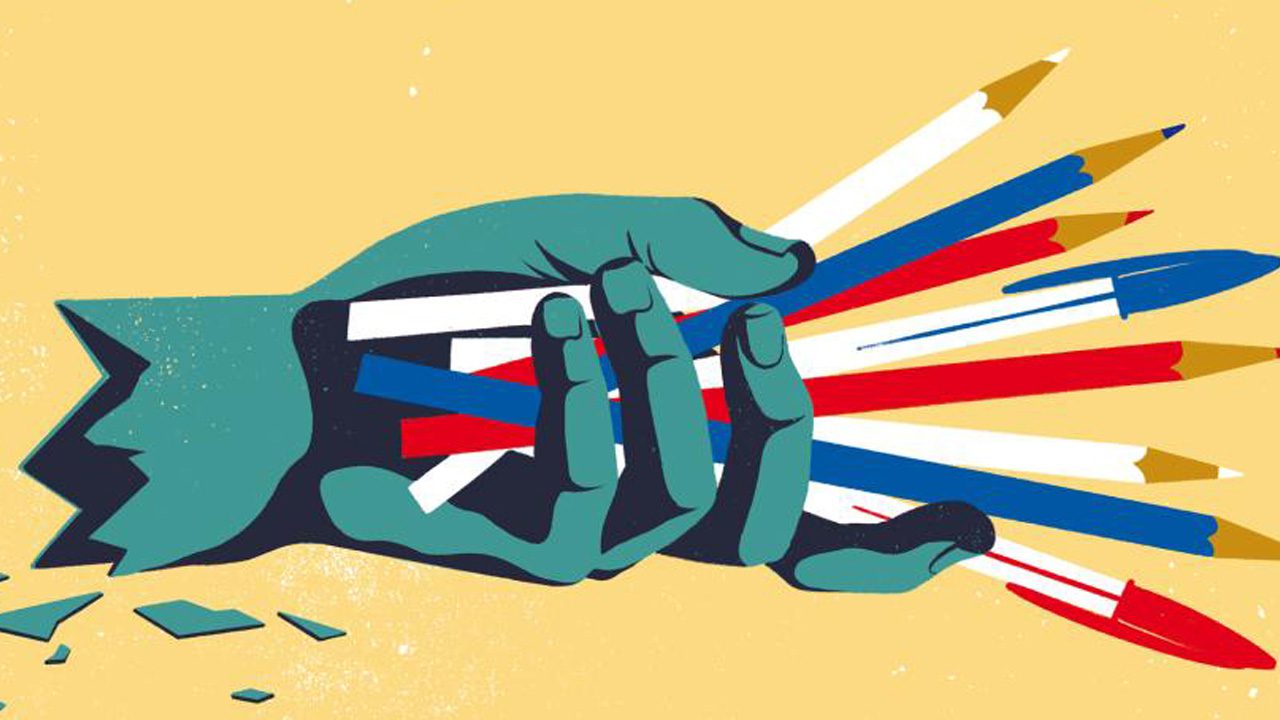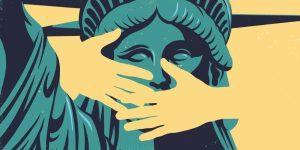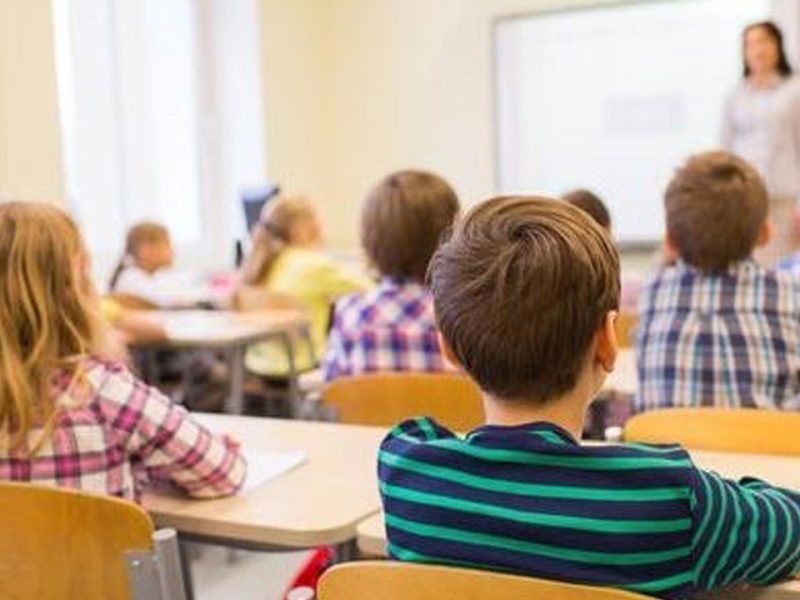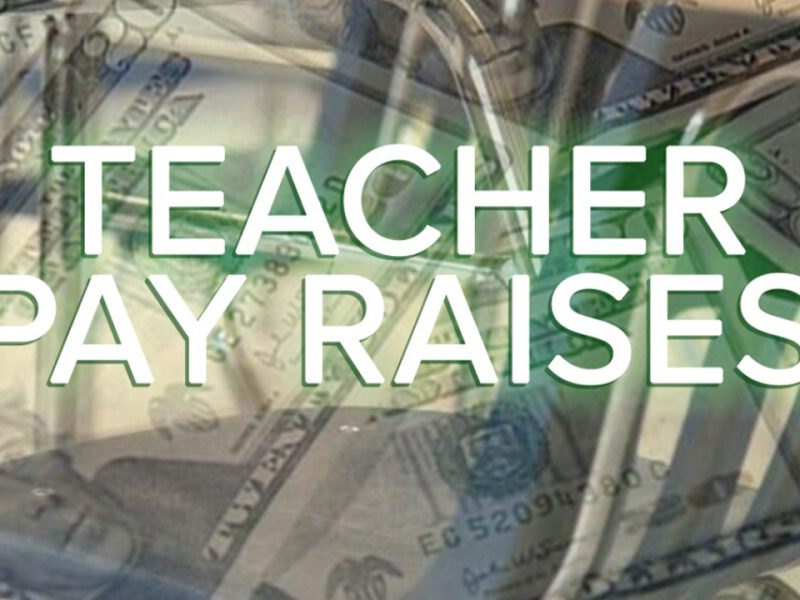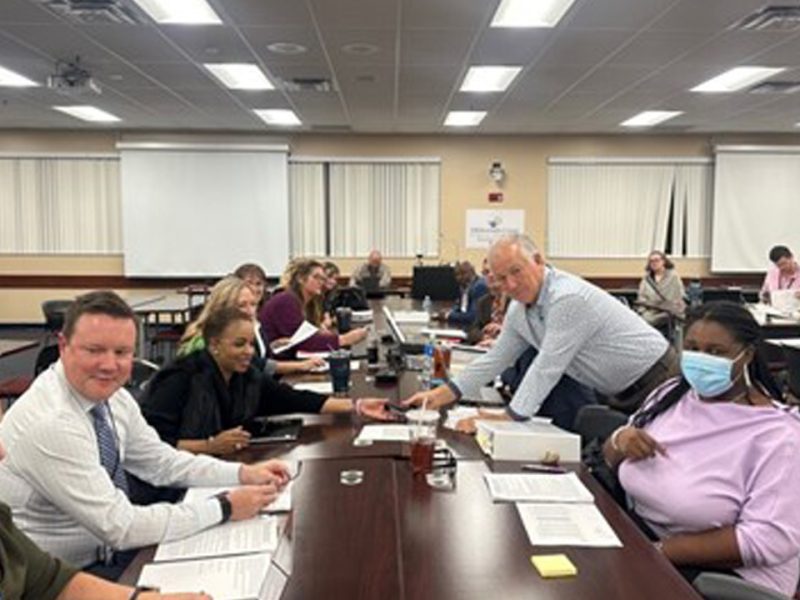The Imperiled Right to Learn
AFT | By Michael Bérubé | July 11, 2024
Teaching in Troubled Times
On February 15, 2024, the RAND Corporation published findings related to restrictions on teaching race and gender from its 2023 State of the American Teacher Survey. The results can be summarized succinctly: the state of the American teacher is scared. As the authors explain:
Public debates around whether and how teachers should discuss topics related to race and gender in the classroom have turned classrooms into political battlegrounds. Between April 2021 and January 2023, 18 states passed policies restricting teachers’ instruction. Many of these state policies restrict teachers’ instruction on topics related to race and gender; some also address how teachers can discuss current events or controversial topics.
In the 2023 State of the American Teacher survey, 65 percent of teachers nationally reported deciding to limit discussions about political and social issues in class. This is nearly double the share of teachers who are located in states that have enacted restrictions.… Regardless of the presence or type of restriction, teachers said that they limited their instruction because they were afraid of upsetting parents and felt uncertain about whether their school or district leaders would support them if parents expressed concerns.
Clearly, the educational gag orders issued by the culture-war right are having precisely the effect their proponents intend: to chill speech and stifle intellectual inquiry nationwide. The very existence of these laws, backed by a national movement of renewed and intensified whitelash (in response to the massive rallies after the murder of George Floyd) and anti-LGBTQIA+ panic (in which, appallingly, some gay and lesbian intellectuals have joined the anti-trans aspect of the panic5), has empowered right-wing activists from coast to coast, inflaming parents and school boards.
Teachers’ fear is well-grounded. No doubt many educators, especially at the K–12 level, are aware of the case of Mary Wood, the English teacher from Chapin High School in Chapin, South Carolina, who became a target of conservative rage—and was reprimanded by administrators—for teaching Ta-Nehisi Coates’s Between the World and Me in her AP English class. Wood’s case is notable because the South Carolina statute Wood violated forbids teachers from making students “feel discomfort, guilt, anguish, or any other form of psychological distress” on account of their race. This is a particularly biting irony for a book in which Coates writes of his studies at Howard University, “It began to strike me that the point of my education was a kind of discomfort, was the process that … would break all the dreams, all the comforting myths of Africa, of America, and everywhere, and would leave me only with humanity in all its terribleness.” In this light, it is not too much to say that the point of right-wing assaults on our schools is to take the “educational” part out of our educational institutions.
From the Schools to the Campuses
The climate of fear in the schools has knock-on effects for higher education. As I write this essay in the spring of 2024, I am teaching Between the World and Me in a capstone course on creative nonfiction for my university English department’s creative writing concentration. I have enough job security to do so, and to suggest to my students that the case of Mary Wood is a spectacular example of whitelash. But my colleagues off the tenure track, who now make up about two-thirds of college faculty nationwide, have no such job protection. If they teach material that makes students and/or their parents upset, they do so at their peril—and the peril is growing greater with each passing year.

In 2022, I was approached by the Elias Law Group to write a report for a lawsuit brought by United Faculty of Florida (among other parties) challenging the constitutionality of HB 233, a so-called viewpoint diversity law that had gone into effect in Florida the previous year. HB 233 mandates an “Intellectual Freedom and Viewpoint Diversity” survey, the intent of which is to monitor the degree to which students, faculty, and staff feel free to speak their minds. (Completing the survey is not mandatory, since that would constitute compelled speech, so it is no surprise that response rates have been extremely low, with percentages often in the single digits.) More perniciously, the law allows students to video-record their classes and use the recording “as evidence in, or in preparation for, a criminal or civil proceeding.” As I remarked in my report, this language quite clearly envisions and fosters an adversarial relationship between student and professor. Professors who find themselves being recorded by their students under HB 233 could reasonably suspect adversarial or malicious intent. There is a national network that includes right-wing student groups such as Turning Point USA and Campus Reform (the latter of which actually pays students to write damning accounts of their professors), which in turn report faculty members to outlets like the Daily Caller, Breitbart, and Fox News; any professor familiar with these groups knows that their course materials and their lectures can be ripped out of context and disseminated in ways that are very likely to leave them subject to harassment and even death threats. Jonathan Marks, a conservative professor of politics at Ursinus College, has eloquently argued in an essay on Turning Point USA that his conservative colleagues should be as alarmed about this phenomenon as he is: “I know relatively few conservative academics who look up from railing against wokeism long enough to notice or say much about the feverish, disgraceful character of too much of what passes on the right. From both a conservative and an academic perspective, that’s a dereliction of duty.”
This is dystopian, to be sure, but the provision of HB 233 I want to focus on is the so-called anti-shielding provision, which baffled me for weeks until I managed to reverse-engineer it—partly by way of reading through the transcripts of the many legislative hearings on the bill to learn how this toxic piece of sausage was made. The anti-shielding provision forbids Florida’s public colleges and universities to “limit students’, faculty members’, or staff members’ access to, or observation of, ideas and opinions that they may find uncomfortable, unwelcome, disagreeable, or offensive.” It is effectively a hate speech protection plan, very much in line with what has become conventional wisdom among university administrators and offices of general counsel—that free speech absolutism trumps all other considerations, including legitimate educational objectives. In a published February 2024 letter, Harvard law professor Laurence Tribe pushed back on this conventional wisdom:
The current doctrinaire insistence that we cannot restrict speech unless it falls within previously recognized narrow exceptions such as the “incitement of violence,” “fighting words,” or “true threats” wrongly elevates free speech above all other freedoms—including the bedrock principle that every student should be free to access education without discrimination. Just as a commitment to free speech can surely coexist with a campus rule banning calls for killing Black students or shunning LGBTQ students even if those calls single out no student in particular, so a commitment to free speech can certainly coexist with a rule banning calls on campus for killing all Jews, whatever the specific context…. Transplanting to university campuses rigid legal categories developed for the evaluation of criminal laws conflicts with the discrimination-free environment that the Constitution requires public universities to afford all their students and that federal civil rights laws demand of private universities receiving federal funding.
Tribe is right that free speech absolutism conflicts with other freedoms students should enjoy and is right that it has become a matter of doctrinaire insistence; in Florida, it is now enshrined in state law.
What makes the anti-shielding provision so remarkable in HB 233—and what puzzled me when I first read it—is that it has been enacted in the same state whose governor announced, upon signing the Stop the Wrongs to Our Kids and Employees (Stop W.O.K.E.) Act in December 2021, that “in Florida we are taking a stand against the state-sanctioned racism that is critical race theory.” There are the obvious facts: the opponents of critical race theory (CRT), led by Christopher Rufo, have no idea what that body of knowledge consists of and no interest in finding out (indeed, Rufo has been admirably honest about his willingness to lie about it), and the whitelash against CRT spectacularly bears out CRT’s critique of structural racism. But leaving those aside, the Stop W.O.K.E. Act very emphatically seeks to shield Florida’s employees and students from ideas that are unwelcome in conservative circles. So what is a professor in Florida’s public universities to do if, under HB 233, she decides that her students should not be shielded from CRT?
Teaching and Learning in Diverse Classrooms
The language of “shielding” was taken from the influential “Chicago Statement” of 2015, which was issued by the Committee on Freedom of Expression at the University of Chicago in response to the discourse around trigger warnings. That statement declared that “it is not the proper role of the University to attempt to shield individuals from ideas and opinions they find unwelcome, disagreeable, or even deeply offensive.” HB 233 closely tracks the Chicago Statement in protecting “ideas and opinions that [students] may find uncomfortable, unwelcome, disagreeable, or offensive.” But there is a decisive difference between the Chicago Statement and HB 233: the Chicago Statement has guardrails. In the paragraph following the shielding clause, it adds:
The freedom to debate and discuss the merits of competing ideas does not, of course, mean that individuals may say whatever they wish, wherever they wish. The University may restrict expression that violates the law, that falsely defames a specific individual, that constitutes a genuine threat or harassment, that unjustifiably invades substantial privacy or confidentiality interests, or that is otherwise directly incompatible with the functioning of the University. In addition, the University may reasonably regulate the time, place, and manner of expression to ensure that it does not disrupt the ordinary activities of the University.
Time, place, and manner restrictions are already central to First Amendment case law; what I want to call attention to here is the restriction of expression that is “directly incompatible with the functioning of the University.” HB 233 contains no such guardrails—no acknowledgment that universities are educational institutions that can legitimately restrict speech that undermines their educational mission.
As history professor Malick W. Ghachem argued in January 2023, the sweeping nature of the Chicago Statement is problematic because it does not grapple with the “subtleties of teaching in diverse classrooms where the challenge is to turn disagreement into an occasion for learning.” HB 233 goes much further, as Florida state Representative Omari Hardy explained during the state House legislative hearings on March 18, 2021. Noting that “school officials have not only the right but the responsibility to regulate expression when they reasonably conclude that it will materially and substantially disrupt the work and discipline of the school,” Representative Hardy argued that
this bill is so vague that nearly anything an administrator or professor would do to control the academic environment could be recast as shielding or limiting someone’s access to or observation of expressive activities or speech that might be offensive, unwelcome, and so on.
And so I wonder, can a professor teaching a class on terrorism stop a student from contributing to the class discussion by showing video clips of American soldiers being harmed abroad? Can a professor of gender studies stop a proponent of pedophilia from having that kind of discussion in the classroom? Can a faculty member or … a faculty advisor of a Christian student organization stop a member from the Church of Satan from using a meeting of that Christian organization to advocate for the benefits of abortion? Can an administrator [prevent] … a student from distributing nude photos of a classmate in a hallway if the student characterizes his effort as an art project or a protest? … In each and every single case, the offending student could conceivably recast the professor or the faculty member’s attempt to gain control of the academic environment as an attempt to shield or limit other students from observing expressive material, however unwelcome. And that’s concerning.
“Concerning” is putting it mildly, but Representative Hardy’s concerns were ignored by every single one of his Republican colleagues. As I testified in court in early 2023, HB 233’s anti-shielding provision licenses a complete free-for-all in the classroom and was approved on a largely party-line vote by people who apparently have no understanding of or interest in the subtleties of teaching in diverse classrooms. Quite apart from Ghachem’s critique of the Chicago Statement, then, the use of the statement in HB 233 demonstrates that the document is quite easy to weaponize.
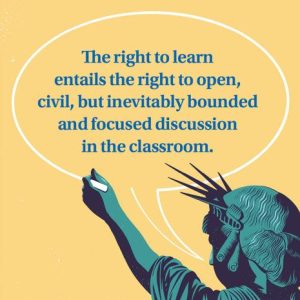
The Right to Learn in a Focused Classroom
In 2003, I published an essay about “John,” a disruptive conservative student in an honors seminar who became increasingly belligerent and combative. In a discussion of Richard Powers’ 1988 novel Prisoner’s Dilemma—which, in part, is an alternate history involving the internment of Japanese Americans in World War II—he insisted that the internment was justified. The class burst into an uproar. I managed to settle things down and then generate a useful conversation. We discussed three key points:
a. Korematsu v. United States, the case in which the Supreme Court upheld the conviction of Fred Korematsu (who was born in the United States) for refusing to relocate from his home in California during World War II;
b. the 1983 overturning of Korematsu’s conviction on the grounds that the government had suppressed and/or destroyed evidence gathered by its own intelligence agencies that Japanese Americans posed no security threat; and
c. the official congressional statement in 1988 that “there was no military or security reason for the internment” and that “the internment of the individuals of Japanese ancestry was caused by racial prejudice, war hysteria, and a failure of political leadership.”
That statement was signed by President Ronald Reagan, which should have put the matter to rest even for conservatives. But the discussion ate up a great deal of class time that I had not anticipated, believing as I did that no reasonable person in the 21st century could argue that the internment was justified. I thought of Thomas Jefferson’s famous 1820 letter to William Roscoe, an English abolitionist, about his new university in Charlottesville: “this institution will be based on the illimitable freedom of the human mind. for here we are not afraid to follow truth wherever it may lead, nor to tolerate any error so long as reason is left free to combat it.” A noble sentiment indeed, though Jefferson did not specify precisely how long we have to combat it in the course of a 75-minute class.
My point is that disruptive students can be … disruptive. And students empowered by a limitless anti-shielding law are basically being given a license for disruption, just as students and parents now feel entitled to demand that a teacher be punished or fired for creating a classroom in which some people feel uncomfortable. Surely any teacher, whether in the K–12 system or in higher education, is aware of the challenges disruptive students pose and knows that the most difficult aspect of teaching involves the improvisatory techniques one has to master.
But in all the discussion of classroom discussion over the past few decades, I have rarely seen anyone argue that disruptive, combative students are infringing on other students’ right to learn—or that the “right to learn” might encompass the right to learn about the work of Ta-Nehisi Coates or Toni Morrison. (After all, many students might want to claim that right! They might even believe that a free society should tolerate and foster criticism of its various failures to operate as a free society for all who dwell in it.) Even though my own students in that honors seminar repeatedly complained to me that John was taking up all the oxygen in the room, I did not think of making such an argument until last year, in the course of a long lunch with the dean of the Bellisario College of Communications at Penn State, Marie Hardin. Marie had a number of questions about the parameters of academic freedom, and after I had gone through my usual exposition of the 1940 Statement of Principles of the American Association of University Professors (AAUP), she asked, “And where are students in all of this?”
I replied that I unfortunately had developed an allergy to that kind of question, thanks to David Horowitz (whom the Southern Poverty Law Center describes as “a driving force of the anti-Muslim, anti-immigrant and anti-black movements”); in the early aughts, he campaigned for an “Academic Bill of Rights,” which included the creation of an organization called Students for Academic Freedom—a deliberate attempt to confuse the meaning of academic freedom by insinuating that students need the academic freedom to resist indoctrination by leftist professors. However, allergic reaction aside, I had to acknowledge that the freedom to teach and the freedom to learn are two sides of the same coin. Though it can’t be denied that the AAUP has far more to say about the former than the latter, the AAUP handbook Policy Documents and Reports (better known as the “Redbook”) does contain the 1967 “Joint Statement on Rights and Freedoms of Students.” On the conduct of classrooms, that statement is clear and unexceptional:
The professor in the classroom and in conference should encourage free discussion, inquiry, and expression. Student performance should be evaluated solely on an academic basis, not on opinions or conduct in matters unrelated to academic standards….
Students should be free to take reasoned exception to the data or views offered in any course of study and to reserve judgment about matters of opinion, but they are responsible for learning the content of any course of study for which they are enrolled.
In follow-up emails, Marie informed me that she was also consulting with staff at the Foundation for Individual Rights and Expression (FIRE), one of whom defined students’ academic freedom as their freedom to access information. She offered that staffer a better definition, informed by our conversation, emphasizing the right to learn.
Marie’s exchange with FIRE seems to me to encapsulate what is wrong with an understanding of teaching and learning that is not informed by classroom dynamics and classroom experience. The right to access information is basically the right to use the internet or a public library; granted, this is not a right enjoyed by billions of people living in autocracies around the world, but it is (so far) uncontroversial in the United States. The crucial point is that accessing information is only one very basic aspect of education—the absolute minimum, one might say. The right to learn also entails the right to open, civil, but inevitably bounded and focused discussion in the classroom, in which students are properly “shielded” from irrelevant and erroneous information. The right to learn also entails the right to participate in discussions without the fear of discrimination or intimidation—though not without the fear of criticism or even opprobrium (the responses sometimes attributed to a censorious “cancel culture” even when the criticism or opprobrium is directed at shameful utterances, like the claim that the Japanese American internment camps were justified). And finally, the right to learn must include the right to learn about the ways in which the United States has failed to live up to its egalitarian promise. American educators should imagine that one part of their mission is to ensure that events like the 1921 Tulsa massacre—which sparked widespread national discussion a few years ago only because showrunner Damon Lindelof based his reboot of Watchmen on reading Ta-Nehisi Coates’s essay “The Case for Reparations”—is never ignored by leaders and forgotten by the public again.
Postscript: The right to participate in discussions without the fear of discrimination or intimidation after October 7, 2023
Hamas’s unimaginably horrific attack on Israeli civilians, followed by the Netanyahu government’s unimaginably horrific pulverization of Gaza, has made the ideal of open and civil discussion about Israel and Palestine nearly impossible—on campuses and in schools as everywhere else, as even families and lifelong friends find themselves torn apart by their varying responses to the atrocities. The crisis has revealed many ugly things, from Netanyahu’s and the Israeli far right’s codependent relation with Hamas (an organization that conveniently allows them to perpetuate the belief that Israel does not have a credible partner for peace) to the sorry fact that many diversity, equity, and inclusion programs on American campuses are not well prepared to deal with situations in which Jewish students, faculty, and staff legitimately feel vulnerable—shunned and vilified even if they have been passionately opposed to the Netanyahu government from the outset and especially to its massive crimes against humanity in Gaza since Hamas’s attack.
It comes as no surprise to me, as a member of the academic left, that pro-Palestinian voices on and off campus are marginalized if not demonized; it also comes as no surprise to me, as a member of the academic left who is not always in good standing with some parts of the academic left, that there are some pro-Palestinian voices from which one can hear the belief that Israel bears all the responsibility for the wanton massacre, rape, torture, and kidnapping of its people on October 7; the belief that Palestine must be free from the river to the sea (which can be a call for either a single binational state or, as it is sometimes taken, the elimination of the state of Israel); and the belief that it is morally wrong to foreground—or even acknowledge—Jewish suffering. Perhaps there have been some pro-Israeli voices on American campuses willing to echo the Israeli far right’s arguably genocidal calls for an ethnic cleansing in Gaza; if so, I have not heard them. I have heard exclusively that it is a very lonely, painful time to be a progressive Jew in American higher education. At the same time, there has been no institutional pressure on Hillel chapters on campus to account for Israel’s pulverization of Gaza, but Students for Justice in Palestine (SJP) has been banned at Brandeis University, Columbia University, and George Washington University—and in Florida, Governor Ron DeSantis ordered that all public universities shut down their SJP chapters. Columbia also banned Jewish Voice for Peace and convened a task force on campus antisemitism that has raised concerns that antisemitism will be conflated with criticism of Israel. There is no symmetry between supporters of Israel and supporters of Palestine on campus; the latter group is and has been far more vulnerable than the former, in American universities as in the Middle East itself.
As this essay went to press, that vulnerability was exploited on many campuses as administrators called the police to disperse and arrest protestors in encampments. A new chapter in human hypocrisy was written as many politicians and administrators who had been championing free speech on campus demanded the suppression of peaceful protest against the slaughter in Gaza. Not every protest was peaceful, but so far, most of the violence—on campuses such as Dartmouth College, Emory University, and Indiana University—has involved excessive use of force by police. Not every protestor has been blameless; some have engaged in reckless sloganeering and indiscriminate criticism of all things Jewish. And as has been widely noted, the protests do not seem to include any demands that Hamas free its hostages. (My own rule of thumb is to consider whether such slogans and critiques are likely to alienate liberal and progressive Jews, without whom there can be no just solution in the Middle East, and to consider the intentions and effects of protestors who do not care about this likelihood.) But reckless sloganeering and indiscriminate criticism are free speech—and do not warrant the aggressively militarized response launched by increasingly authoritarian university administrations, first at Columbia and then on campuses across the country. To be sure, there were exceptions at universities like Brown, Johns Hopkins, and Wesleyan. But the hair-trigger response of the universities where police were summoned remains remarkable—and deplorable.
In this context, therefore, at a time when even the invocation of “context” has become controversial, I do not want to be understood as saying that the right to learn—more specifically, the right to participate in discussions without the fear of discrimination or intimidation—is imperiled only by right-wing culture warriors. I believe that right-wing culture warriors have mounted a largely successful, well-organized, and profoundly anti-intellectual campaign against things they think of as “woke” and “liberal indoctrination,” and that their ignorance of what actually takes place in educational institutions at all levels is, for their constituency, one of their political strengths. I also believe that the phenomenon of liberal-centrist “both-sides-ism,” which promotes false equivalences between threats to intellectual freedom from left and right, is real and pernicious, and that comparisons of “cancel culture” to the Red Scares that followed the two world wars of the 20th century are too laughable to merit serious debate. And I also believe that the campus left is sometimes demonstrably an obstacle to open and constructive debate, and that it affords its opponents too many opportunities for saying so. I therefore close this essay in the hope that the atrocities in the Middle East might lead us to acknowledge, without denying the far greater scope of the atrocities in Gaza, that the American campus is a place where Jewish and Muslim students, faculty, and staff may plausibly feel imperiled—and might lead us to rededicate ourselves to the extraordinarily difficult task of fostering all our students’ right to learn.



